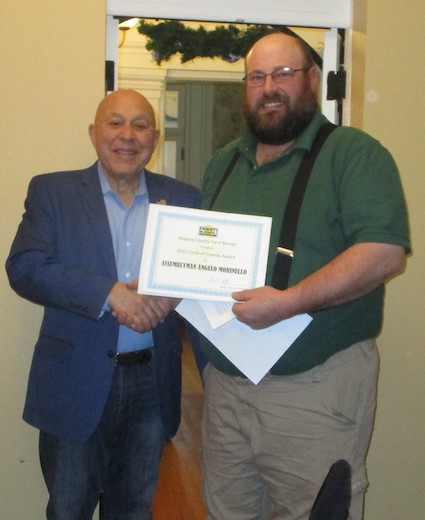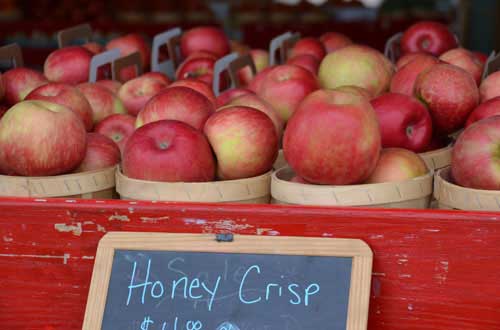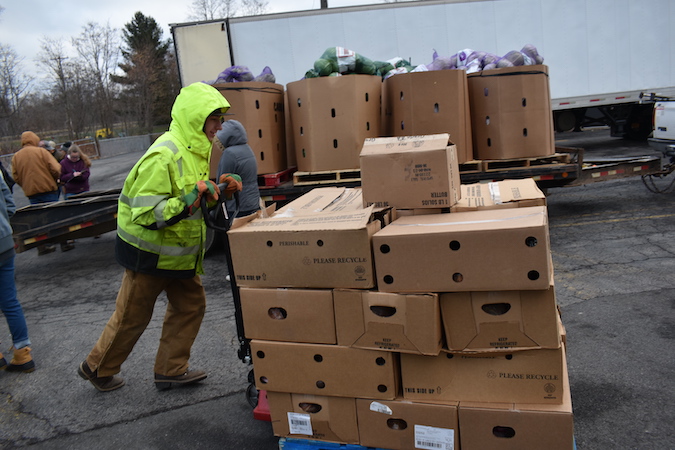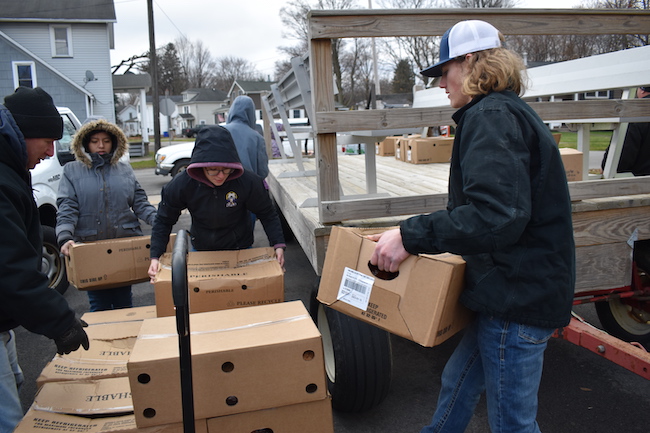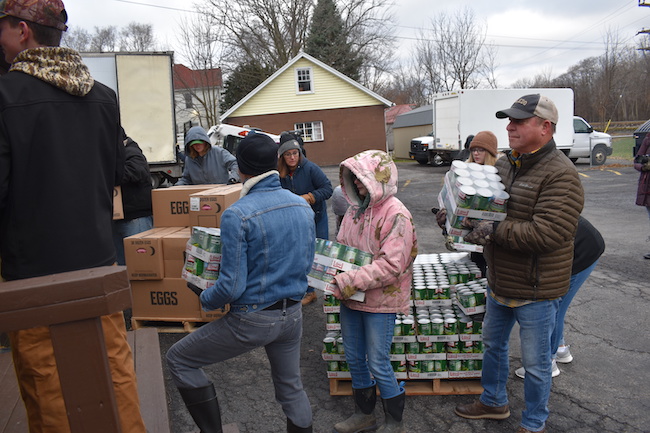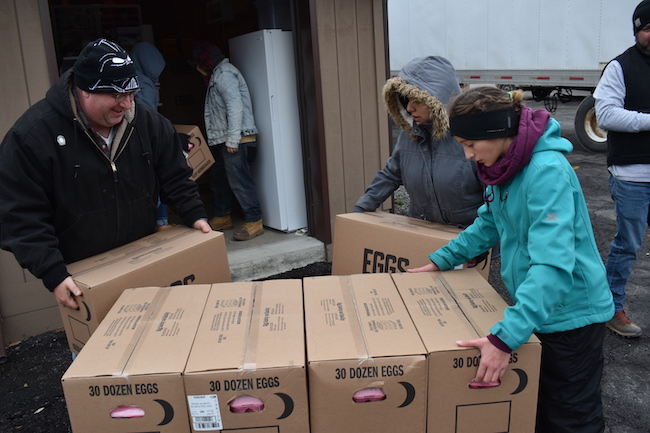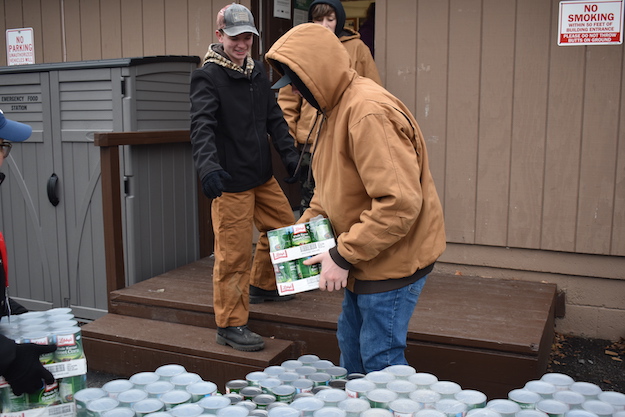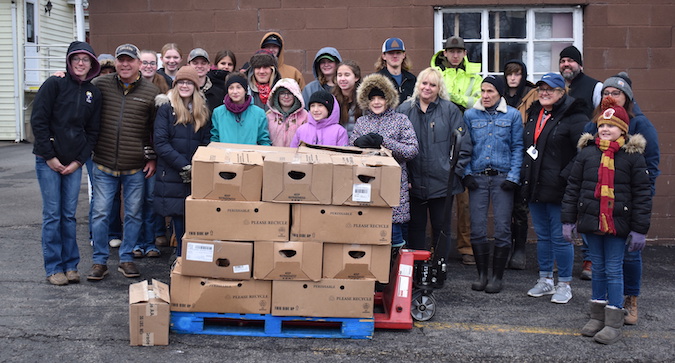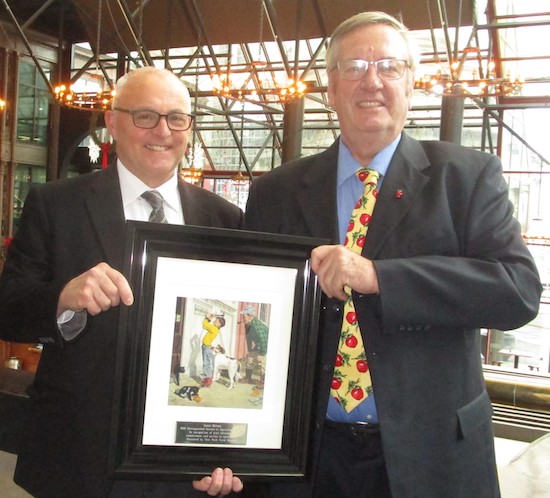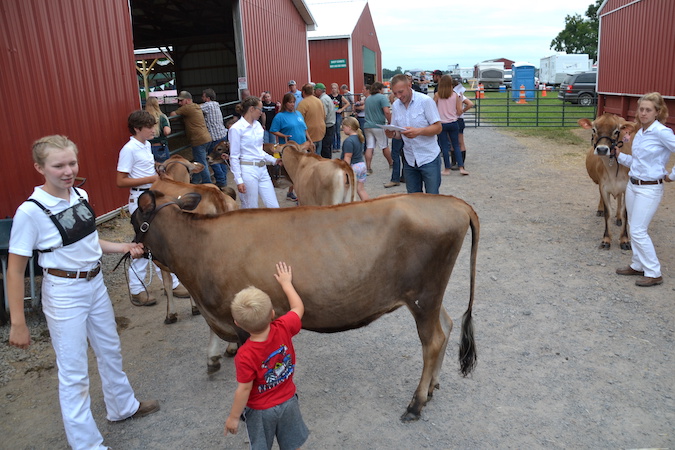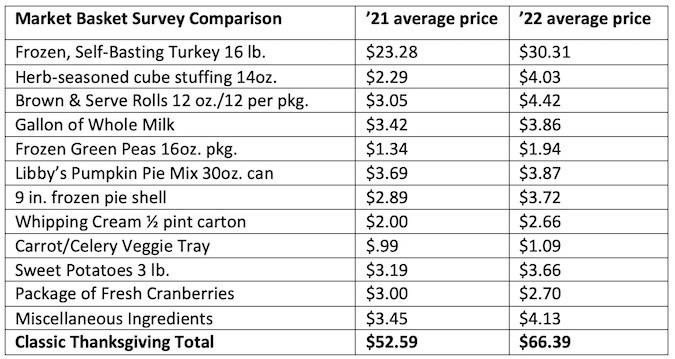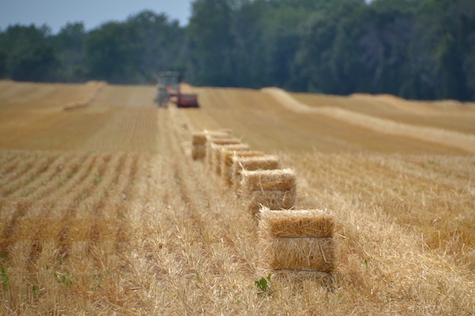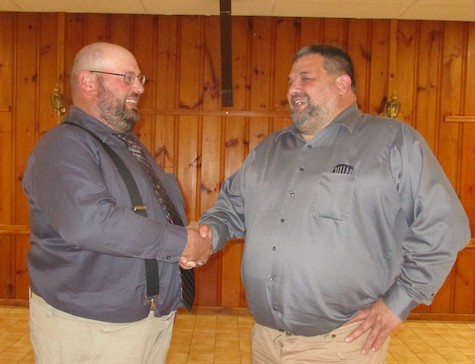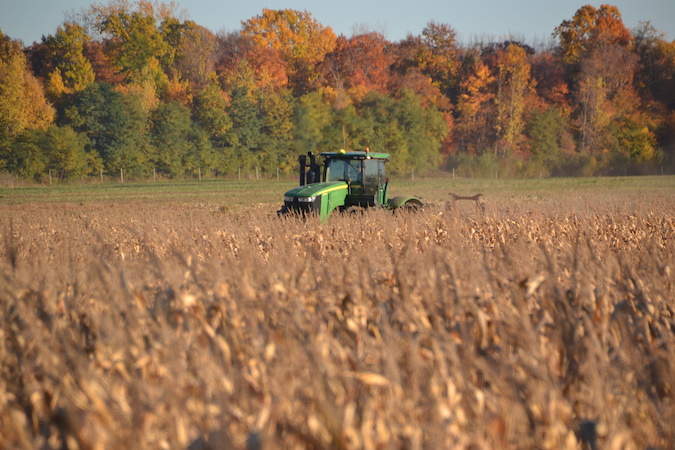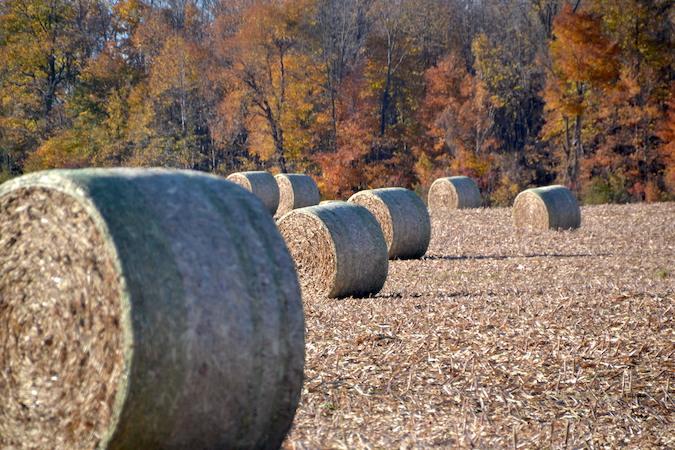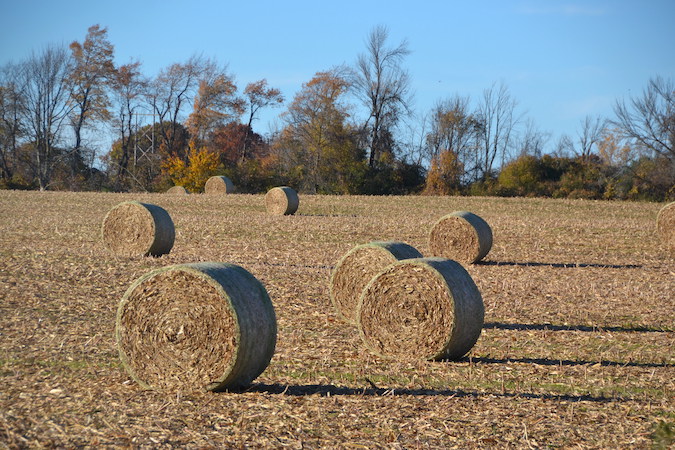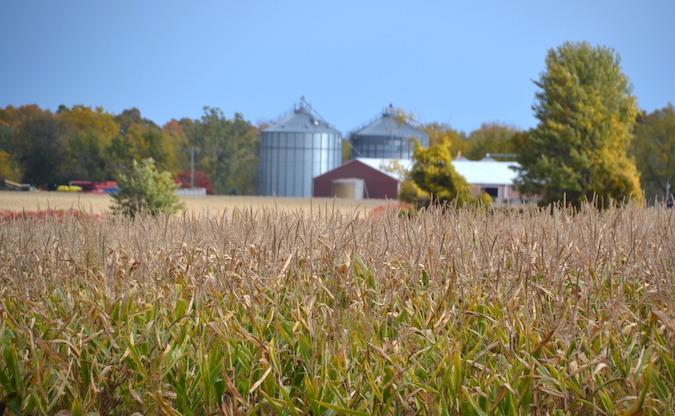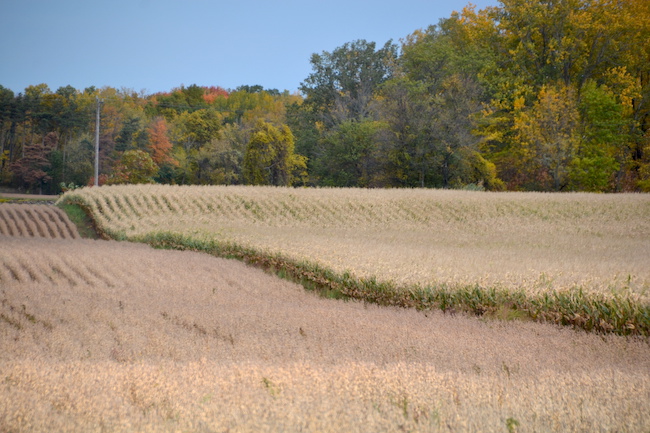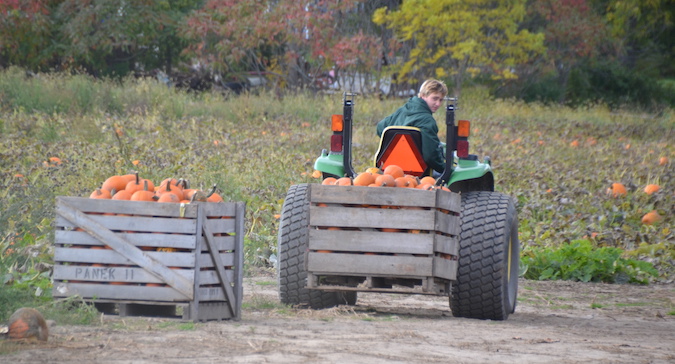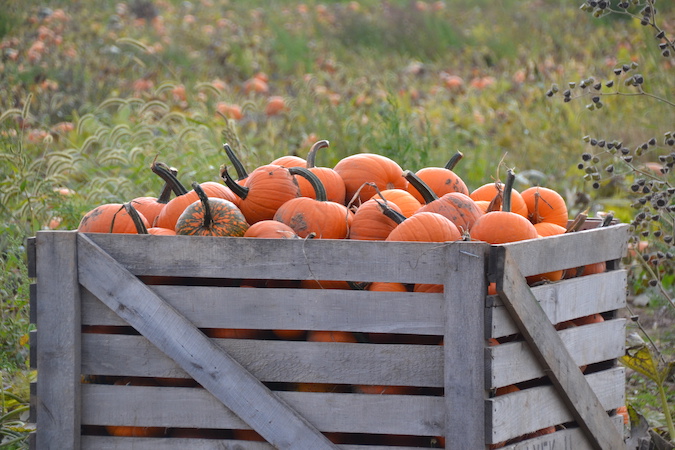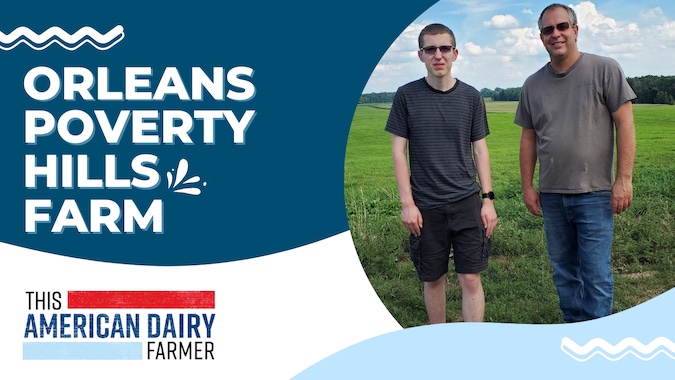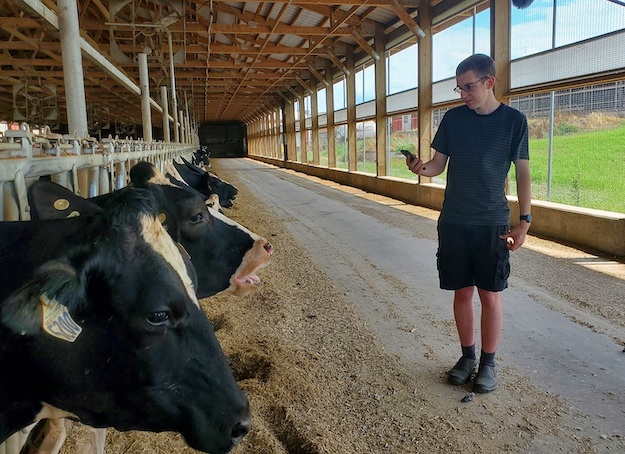NY Farm Bureau lists legislative priorities for 2023, with ‘skyrocketing labor costs’ among top concerns
Organization backs Nourish New York which brings produce to food pantries, community distributions
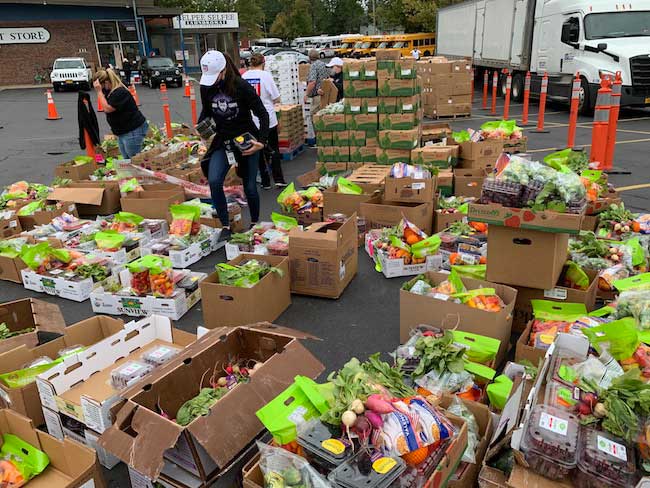
File photo by Tom Rivers: Volunteers get food ready for a large distribution in Albion on Sept. 11, 2020. Each of about 300 vehicles received boxes of food from the Nourish New York program which has been going for about three years now since soon after the start of the Covid-19 pandemic. On this distribution, people received Most of the people received grapes, strawberries, peppers, Brussels sprouts, apples, blackberries, raspberries, radishes and oranges.
Press Release, New York Farm Bureau
ALBANY – New York Farm Bureau released its 2023 state legislative priorities on Tuesday that addressed the needs and challenges of the state’s diverse agricultural community. NYFB President David Fisher and Public Policy Director Jeff Williams highlighted the major issues based on member approved public policy positions.
Farm Labor Needs
The first priority is asking New York State lawmakers to replenish the Unemployment Insurance Trust Fund. This has been a big issue for NYFB members who have been saddled with assessment charges on their quarterly contributions to the unemployment insurance fund.
New York State borrowed billions from the federal government during the pandemic to cover increased UI costs. New York has been the only state that has not begun to make payments on the debt or interest, instead its passing those costs on to employers.
“This is inexcusable. New York must pay its own debts. There seems to be great interest in the legislature to make this happen, and we will continue to make this a priority,” said President Fisher.
NYFB is also concerned about efforts to raise the minimum wage once again. It just climbed a dollar an hour at the end of the year in upstate New York and will likely hit $15 by the end of this year to match what it is in New York City and on Long Island.
The farm overtime threshold will begin to drop as well next year, further increasing skyrocketing labor costs. New York State cannot keep making it more expensive to do business in this state, especially when other states are far behind New York’s wage rates. Like all consumers, farms are facing high inflationary costs. Inputs are up across the board for energy, transportation, labor, fertilizer, and supplies.
“Let’s press pause on these annual income hikes and let things settle for the business community. Now is not the time to make it worse,” said Fisher.
State Budget
Another NYFB state priority is securing proper funding in the New York State budget. The governor’s spending plan will be released soon, and NYFB is looking to maintain funding for important animal health, promotion, and research programs along with full funding for the Environmental Protection Fund. The EPF is responsible for helping farms implement best management practices that include soil health and nutrient management programs that protect our land and waterways. This also includes efforts to help our farms meet the state’s climate goals.
NYFB is also hopeful the governor’s proposal for a refundable investment tax credit is included in the final budget. This will incentivize investment, especially coming off of challenging years of low commodity prices and then the pandemic.
“The state budget is an investment into our state’s farms and local food production. We all benefit when we have a strong farming community,” said Fisher.
Support for Increased Markets for New York Grown Products
NYFB would like to continue funding for the Nourish New York program. It has proven to benefit both farms and people in need. It redirects fresh, locally grown food into regional food banks and emergency food pantries while also helping farms offset the costs to produce, harvest, package, and transport the healthy food.
“Nourish NY served as a lifeline during the pandemic, and we must maintain the program that ensures all new Yorkers have access to New York produced food,” said Jeff Williams.
NYFB is also supportive of the governor’s effort to increase state procurement to 30% for New York farm products. It makes sense for New York to support its own farms when purchasing food for its state agencies and institutions. But we also want to make sure that the regulations are not exclusionary or enforce value-based purchasing requirements that are not currently required by state or federal laws.
Extended Producer Responsibility Legislation
NYFB is concerned about the Extended Producer Responsibility legislation. This bill looks to pass the cost and responsibility of recycling packaging away from the consumer and to the source of the product, in this case, farms and food processors who need things like milk containers, wine bottles and food packaging to sell what they produce. This puts an extraordinary financial burden on to the state’s farms and businesses. This would eventually increase the cost of doing business and further drive-up consumer prices.
Direct Sales for Farm Beverages
NYFB is prioritizing legislation allowing for direct-to-consumer shipping for all New York produced farm beverages, including beer, cider, and distillates. Providing direct-to-consumer sales for craft spirts, hard cider and beer would be a new market opportunity for the industry and put craft beverage makers on parity with the state’s wineries that already have the ability to ship to consumers.
“It is imperative that we all work together to expand opportunities and capitalize on what we do well in New York,” Williams said. “We have one of the most diverse agricultural sectors in the country. It is worth it to each of us to maintain that strong connection to food and farm production. This benefits our food system, local economies, and overall quality of life in the state.”
Other priorities include:
- Support the development of solar energy that balances private property rights and the current and future land needs of agriculture in the state. Whenever possible, prime soils and actively farmed lands should be avoided in favor of previously disturbed or fallow lands and rooftop development for distributed generation.
- Support critical funding for current agricultural animal health (such as the Avian Disease Program), promotion, research, and environmental programs in the final FY 22/23 state budget.
- Solar development and the aggregate value of solar lease payments should be utilized as potential development value when property is appraised for PDR values or similar farmland preservation programs.
- Oppose any alteration to Soil and Water Conservation District laws that would change the make-up, mission and function of the State and County Soil and Water Conservation Districts without the statutorily-required inclusion and input from County Boards of Supervisors, or county legislatures, New York Farm Bureau, the New York State Grange, NYS Department of Agriculture and Markets, and the four-way partnership (NRCS, NYACD, the State Committee, and the Employees Association) of the Soil and Water District system.
- Oppose legislation that prohibits the use of agricultural chemical protectants and support strong DEC’s regulatory authority over pesticide registration in accordance with sound science.
- Oppose Extended Producer Responsibility legislation that doesn’t require consumer responsibility for packaging they receive and doesn’t unduly burden New York’s food and wine manufacturing businesses.
- Target federal and state infrastructure funding for rural roads, bridges and broadband.




















